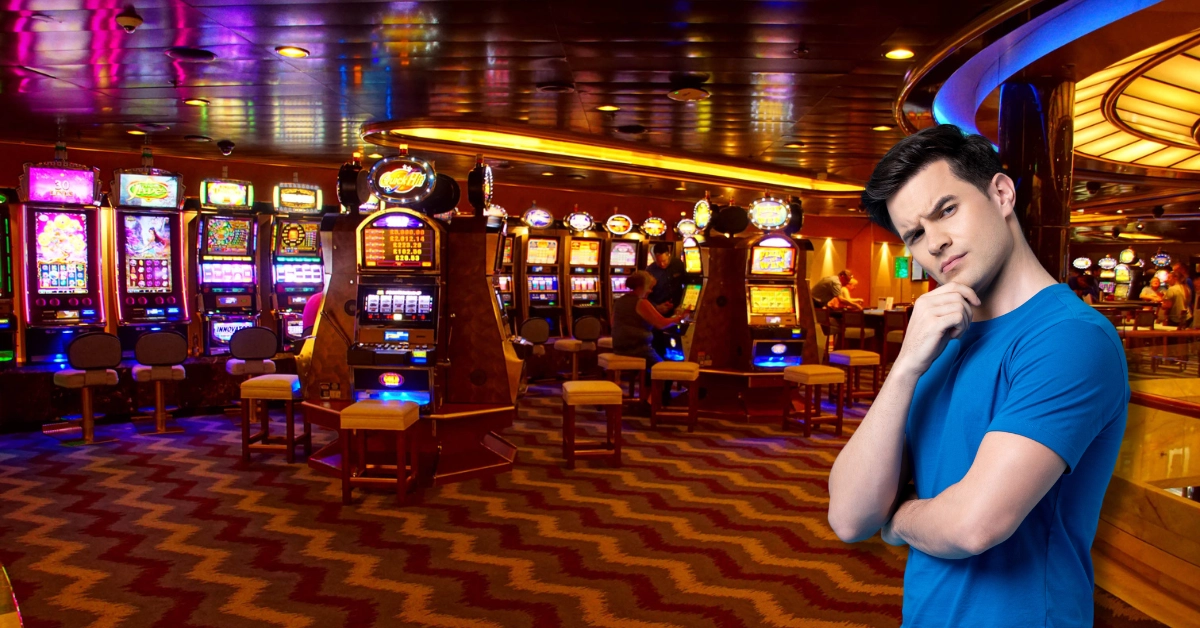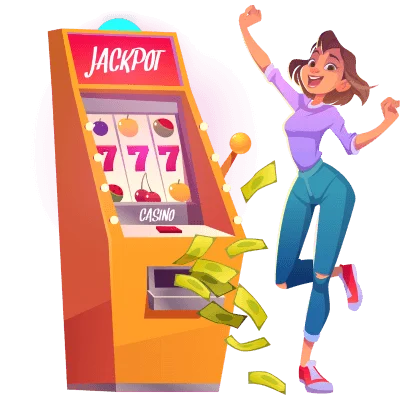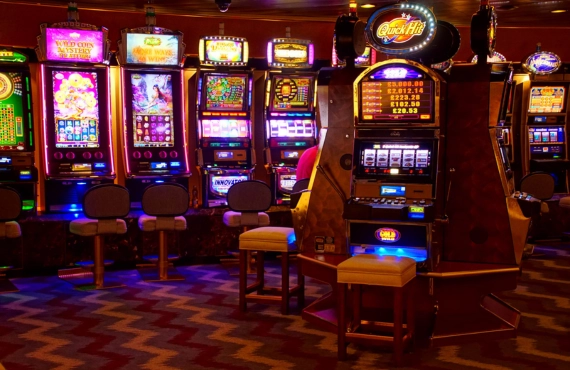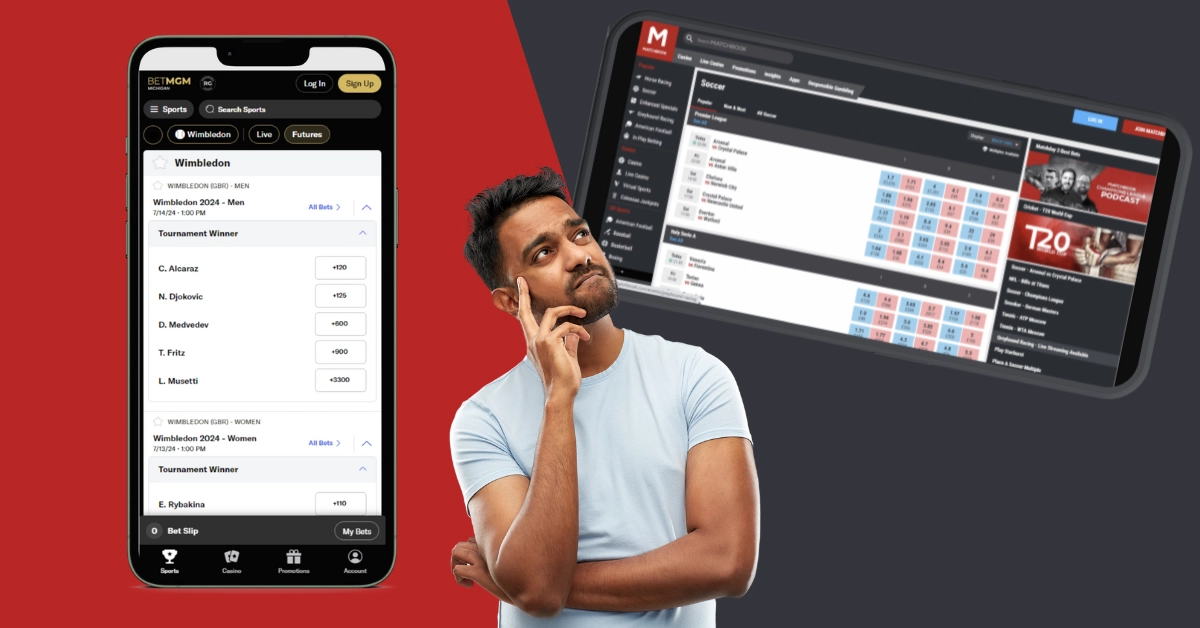Hot or Not? How Slot Machine Location Influences Your Casino Winnings

Seating is important. Don’t laugh! When you were in school, where you sat at lunch mattered, right? And when you’re at a wedding, it counts, too! If you’re single and stuck at the singles table or, worse—the kiddie table because the bride and groom didn’t know where to place you when they did the seating chart, that is not ideal.
Our point is this: If seating matters in lots of social scenarios, does it matter in a casino? Do you see where we are going with this? Because rumor has it, where you sit when playing slot machines could change your odds of winning. Is this true, or just gambling lore?
Gamblers are a superstitious crowd, and there is a pretty common belief that location is everything in relation to slot machines. This is a prevalent myth that has permeated the casino world since casinos became a thing—slot players wholeheartedly believe that the placement of a slot machine has a direct correlation to its payout rate. Is this truth or fiction? We are gonna find out!
While we are on the topic, think about your time spent spinning the slots—have you ever had better luck in certain spots, or do you think it’s an urban folk tale?
The Origins of the Slot Machine Location Myth
Slot machines have been a fixture in casinos since the beginning, and they’ve been spinning up excitement and a healthy dose of myths. One of the most enduring is the idea that where a slot machine sits on the casino floor can make it more likely to pay out. Maybe you’ve heard that the machines near the entrance are the ones to try or that the ones that are tucked away in corners are “cold.” These beliefs have been around for ages, but do they actually hold any water? How did these myths start, and why have they stuck around?
The History Behind the Lore
The myth of slot machine placement has roots in the very early days of casino gaming. Back then, there was some method to the madness: casinos did sometimes place “looser” machines—those set to pay out more frequently—near the entrances.
The logic to this was simple: if passersby saw someone winning, they’d be more likely to come inside and play. And it was this tactic that helped launch the belief that some machines were inherently better than others based on where they were located.
But modern slots don’t work that way. Each spin is independent thanks to Random Number Generators (RNGs), so a machine’s position doesn’t affect its chances of paying out. Casinos are now more concerned with making sure the gaming floor looks busy and fun. Sure, they still put popular games in highly visible spots to get attention, but that doesn’t mean those machines are set to win more—or less.
Psychology of Casinos
Casinos are literally experts at designing an atmosphere that keeps people playing, and the layout is a huge aspect of it. High-traffic areas, like the spots near bars, restrooms, or entrances, are primo real estate for games that flash, beep, and tend to draw a crowd. If you see a cluster of people gathered around a machine, it will probably give you the impression that something exciting is happening there. But this is more about making the place feel energetic than boosting your odds of winning.

The idea of “hot” and “cold” machines is a classic casino myth, and this one makes players hop from machine to machine, as they are convinced they’ll find one that’s about to pay out, while others sit tight, believing their luck will change if they just keep spinning (kinda like Dory says “just keep swimming” in Finding Nemo). But the truth is that every spin is random, and no amount of hopping around or sticking it out with one machine changes that. The RNG guarantees that there is no way to predict when a machine will hit, no matter where its real estate is in a casino.
Common Myths
The most common and enduring myths that still circulate on the casino floor include the following:
This myth stems from the old practice of putting eye-catching games near the doorways to entice newcomers into a joint. While it is true that those machines would get more play because they were easier to spot, they certainly weren’t set to pay out any more than the ones that were further inside the building. The idea was to get attention, not to rig the odds of a slot machine.
Similar to the entrance myth, there’s a belief that the slots placed in the busiest spots, like near walkways or bars, are more generous with payouts. Casinos do put popular or visually appealing games in these areas, but the payout settings are consistent across the floor. The game’s randomness doesn’t change solely because it’s getting more foot traffic.
A lot of players think machines have streaks where they’re either “hot” (paying out consistently) or “cold” (not a lot of wins). This stems from our tendency to look for patterns, even when they don’t exist. In reality, every spin is independent of the last, so there’s no such thing as a streak. A machine doesn’t have the capability to “remember” how it’s been performing.
A persistent myth is that playing slots at certain times of the day gives you better odds. People will claim that you’re more likely to hit the jackpot in the early mornings, late nights, or midweek afternoons. But modern slot machines don’t operate on timers; they use RNGs, which means every spin is random and unaffected by the time of day. There is no secret schedule they are running on.
Some people swear that if you hit the spin button at exactly the right moment, it can increase their chances of winning. But slot machines aren’t designed to reward perfect timing—or any timing at all. The second you press that button, the outcome is already determined, no matter how carefully you’ve timed it. It’s just another way that players try to feel a sense of control, but it’s all random luck.
It’s true that higher denomination slots will give you bigger payouts, but that doesn’t mean they’re any easier to win! They’re set with similar odds, and it’s more about the amount you’re willing to bet than a higher chance of hitting a jackpot. The exact same random mechanics still governs every spin.
Do Casinos Really Place High-Payout Slots in Certain Areas?
Slot machines have long been a staple of casinos, and with that comes a web of myths, including the persistent belief that casinos strategically place high-payout machines in certain areas to tempt players. As we said earlier, machines near the entrance, by the bar, or along a busy walkway make gamblers think that some spots on the casino floor are “hot” zones where the slots are set to pay out more often. But is there any truth to this? Are casinos really that deliberate in their slot machine placement, or is it just a blend of old habits and modern marketing? Let’s see what the experts have to say, the strategies casinos use, and the origin story of this myth!
Industry Insights
Historically, there was some kernel of truth to the idea of strategic slot machine placement. In the very early days, casinos would put machines with slightly higher payout percentages in prominent areas so it would bring in players. The concept was a basic one: if people are seen winning as soon as others walk in, they will probably stick around. But as the gambling industry started to change, the practice faded out.
At present, slot floor directors have emphatically stressed that modern casinos don’t rely on strategic placement to influence the payouts. Casino operators are focused on maximizing overall playtime and player engagement. Frank Legato, a renowned gaming expert and editor of Global Gaming Business, has pointed out that while casinos once upon a time did use strategies that seemed to favor slot placement, today’s floors are designed more for visual appeal and player comfort.
“Casinos are more interested in keeping the games accessible and enjoyable than in trying to trick players into thinking one machine is better than another based solely on location,” he explained during an interview at the Global Gaming Expo.
Casino Floor Layout Strategy
Today’s casinos use technology, design, and psychology to design the best gaming environment they can. The goal definitely isn’t to hide high-paying slots in random corners or stack tight machines near the bar; it’s to keep players engaged and playing for longer periods of time. Modern slot machines are programmed with pre-set payout percentages, regulated by gaming authorities, and these settings can’t be changed on a whim. Casinos have no incentive to scatter high and low-paying machines in specific locations because it wouldn’t produce the result they want, which is to keep people spinning the reels.

The use of Random Number Generators (RNGs) verifies that all spins on a slot machine are independent, which means it is impossible to predict or manipulate which machines will hit and when. Slot machines are set based on hold goals, which are determined by the casino’s financial planning, not by where they’re put on the gaming floor. So any perception that a machine in a high-traffic area pays out more is more likely due to the fact that it’s simply played more often, and that increases the frequency of wins—without affecting the odds.
Machines near entrances or central walkways do get more attention, but it doesn’t mean they’re “looser.” It’s just a way to keep the floor lively and players engaged, which is a priority for casino operators who want to create a bustling, exciting atmosphere!
Expert Opinions
Frank Scoblete, a respected voice in the gaming world, talked about this in his book Break the One-Armed Bandits—how the perception of slot placement stuck around because of practices from long ago. He said in an interview with a casino manager who, at the time, confirmed that certain slots were positioned strategically to maximize profits. But even then, it was less about making those machines “hot” and more about keeping a steady revenue across the gaming floor.
He said, “At one time, machine placement was used to drive player behavior, with higher-paying machines strategically positioned. However, the industry has evolved, and now casinos rely on a mix of enticing game features and an engaging floor layout to keep players on the machines. You won’t find loose slots just by walking around.”
Other experts have said that casinos rely on data-driven insights about player behavior rather than the old-fashioned slot placement strategies. Slot floor directors have reiterated that data collection just means casinos can understand how players interact with the games, and it has shifted the focus from where a machine is to what kind of games players flock to the most.
How Slot Machines Work: Understanding the RNG
Slot machines are a fun combo of excitement, anticipation, and chance. But behind the spinning reels and lights, a hidden engine is driving these games, and that is the Random Number Generator (RNG). For those who want to understand how slots work, grasping the concept of RNG is important. We’ll explain the role of RNGs in slot machines, how they guarantee game fairness, and what factors actually affect your payouts, including RTP, game design, and bet size!
Random Number Generator (RNG)
An RNG is an algorithm that determines the outcome of every slot machine spin, and it works by continuously generating random numbers, even when the machine isn’t being played. When you press the spin button, the RNG picks a number from this stream, and that number corresponds to a particular set of symbols on the reels.
The most important feature of RNGs is that every spin is completely independent, meaning that the outcome of a spin is never influenced by previous spins, the machine’s location on the casino floor, or any other external factors. Each spin is a new, random event so that every player has the same exact chance of winning, no matter where or when they play. This randomness is regulated by gaming authorities and independent testing agencies like eCOGRA, which certify that the RNGs are functioning properly and fairly.
There are two types of RNGs used in gaming: Pseudorandom Number Generators (PRNGs) and True Random Number Generators (TRNGs). While PRNGs use complex algorithms to simulate randomness, TRNGs rely on unpredictable physical processes, like atmospheric noise, to generate numbers. For most land-based slot machines, PRNGs are standard because they are efficient and secure so that no patterns can be exploited by players.
Key Factors that Affect Payouts
RNGs do the heavy lifting in guaranteeing fairness, but there are other factors that dictate the payout dynamics of slot machines. Knowing how these work can help you make the smartest choices when you’re playing!
The Return to Player (RTP) percentage is the main metric that tells you how much a slot machine will return to players over time. If a game has an RTP of 96%, it means that, on average, players will get back $96 for every $100 that is wagered. But you have to keep in mind that this percentage is calculated over thousands or even millions of spins. That means that short-term gameplay can vary widely, and you might have sessions where you win big or lose everything.
Casinos usually set the RTP for each game, the manufacturers lock these settings, and this means that altering the payout isn’t a possibility for a casino. Online slots always display their RTP rates openly, making it easier for players to choose games with higher payout potentials.
Another major factor that affects slot machine payouts is the game’s design, specifically its volatility. Volatility (or variance) refers to how often and how much a slot pays out. Low-volatility slots give frequent, smaller payouts, making them good for players who like steady gameplay without too much risk. And high-volatility slots will have longer dry spells but they have the potential for way bigger payouts when they do hit.
Jackpot slots fall into the high-volatility category because they offer massive rewards but are less likely to pay out small wins as often. When you understand volatility, you can pick the games that match your risk tolerance and gameplay preferences!
Your bet size also influences the outcome of your slot gaming—most slot games have a minimum and maximum bet, and certain features, like jackpots, might only be accessible if you’re betting at the higher end of the scale. Increasing your bet size doesn’t change the RNG or the game’s payout percentage, but it does mean that your potential winnings (and losses) are proportionally larger.
Some machines are designed with bonus features that are only activated when you bet on all of the available paylines or wager a certain amount. In these cases, betting the minimum could prevent you from accessing certain bonus rounds or multipliers, which lowers your potential payout. So, if you’re playing for big wins, it’s worth considering what the optimal bet size is for the machine you’re playing on!
Analyzing the Factors That Truly Affect Slot Payouts
Slot machine players are always on the lookout for patterns or strategies that might give them any kind of edge. And we are sorry to burst your bubble, but the truth is that the most important factors that affect payouts are not based on location or timing but on the game’s design elements. Understanding Return to Player (RTP), slot volatility, and other key aspects, such as game type and bet size, can help players make more informed choices. This guide will break down how each of these factors plays a role in determining what you can expect when spinning the reels.
Return to Player (RTP)
RTP, or Return to Player, is a percentage that indicates how much of the total money wagered on a slot is paid back to players over time. For example, if a slot has an RTP of 96%, it means that, on average, players will win back $96 for every $100 wagered. It’s important to note that this figure is calculated over thousands or even millions of spins, so that short-term play can vary greatly.
The game developers set RTP and remain fixed; casinos can’t alter it on a whim. This consistency makes RTP a reliable indicator of how much you can expect a slot to return over the long run. Unlike factors like location or the time of day, which don’t influence outcomes, RTP is a far better gauge of a slot’s potential payout. Higher RTP slots are generally more appealing to players because they offer better long-term odds, though this doesn’t mean guaranteed wins during a gaming session. Always check a slot’s RTP before playing, especially if you’re focused on maximizing your returns.
Slot Volatility
Volatility, which is sometimes referred to as variance, is another important factor that affects slot payouts. It measures how often and how much a slot tends to pay out, and there are three metrics:
- Low Volatility: Slots with low volatility will payout smaller but more frequent wins. These games are perfect for players who like a steady pace and don’t want to risk large sums. Games like Starburst fall into this category, with lots of small rewards that mean you stretch out your bankroll for longer.
- Medium Volatility: These slots are in the middle ground and have a mix of smaller, frequent wins and the occasional larger payout. Games in this range cater to players who like some risk but don’t want to go overboard.
- High Volatility: High-volatility slots are designed for risk-seekers. They may not pay out as often, but when they do, the rewards are big. Games like Money Train 3 fall under this category, where the possibility for a big win is high, but you have to be patient and weather longer dry spells with no payouts.
Knowing the volatility level helps you choose a game that matches your playing style and bankroll. For instance, if you have a limited budget, opting for low or medium-volatility slots can extend your gameplay, whereas high-volatility slots suit those willing to take bigger risks for the chance of larger payouts.
Factors That Affect Slot Payouts
Different types of slot games come with varying payout structures, bonus features, and win potential. Classic slots have easy gameplay with fewer paylines and bonus rounds; video slots usually have elaborate themes, multiple paylines, and interactive features like free spins and multipliers, and Megaways is the grand poobah of slots! The game elements impact how often and how much you can win:
- Classic Slots: Simple, straightforward gameplay, usually with three reels and fewer paylines. They tend to have lower volatility and smaller jackpots.
- Video Slots: More complex, with multiple reels, paylines, and bonus features. They can range from low to high volatility, depending on the game design.
- Megaways Slots: Feature a varying number of ways to win on every spin, adding an element of unpredictability and the potential for huge payouts, but they come with higher volatility.
Your bet size also influences your slot play, even though it doesn’t affect the RTP or the RNG (Random Number Generator) that determines spin outcomes! It does play into how certain features are activated, like with progressive jackpot slots, which usually require maximum bets to qualify for the jackpot, meaning betting smaller amounts won’t give you a chance at the big prize.
Higher bets also increase the size of potential wins, but they also mean bigger losses if things don’t go your way. Conversely, lower bets stretch your bankroll but limit your chances at big rewards. Deciding how much to wager each spin is about balancing potential returns with your budget!
One of the most popular types of slots is the progressive jackpot slot, which is a game that sets aside a portion of each wager to a central jackpot, which continues to grow until someone hits the winning combo. The most well-known examples are Mega Moolah and Mega Fortune. Although progressive slots can pay out life-changing sums, they usually have a lower RTP compared to non-progressive slots. This is because part of the bet goes into building the jackpot pool instead of being returned to the players.
Non-progressive slots have fixed jackpots, which will be smaller but are statistically more attainable. The choice between progressive and non-progressive all comes down to whether you’re chasing the excitement of a massive jackpot or want more consistent but smaller wins.
Popular Myths Debunked
Slot machines have been around for over a century, and like anything with enduring popularity, a host of myths have emerged. A lot of the misconceptions arose from outdated ideas or a lack of understanding of how modern slot technology works, specifically RNGs. Below, we’ll bust some of the most common myths about slot machines, explain why they’re misleading, and clarify what actually drives slot outcomes.
Myth 1: Machines Near the Entrance Pay More
One of the longest-standing myths is that slot machines near the entrances of casinos are programmed to pay out more frequently, enticing people walking by to step inside. While this might have been a strategy in the past when mechanical slots were more common, it no longer holds true in today’s modern, regulated gaming environment.
RNGs govern modern slot machines, and they make sure that every spin is random and independent. The outcome of a spin is not influenced by where the machine is located on the casino floor. Instead, casinos might place popular or visually appealing machines near entrances to catch the attention of passersby, but the placement has no effect on the payout rate. Gaming regulations also prevent casinos from altering payout rates based on location, ensuring fairness across the board. So, while you might see bustling machines near the door, it’s more a case of strategic placement rather than generous odds.
Myth 2: High-Traffic Area Machines Payout More to Attract Attention
Like the entrance myth, there’s a belief that machines positioned in high-traffic areas, like near bars or restrooms, are set to be “looser” so they can attract attention from a larger number of players. This stems from the idea that casinos want people to see others winning, thus encouraging more play.
However, this is another misconception. Modern slots, whether they are in the busiest part of the casino or tucked away in a corner, have pre-programmed RTP (Return to Player) rates and use RNGs to ensure every outcome is random. Casinos don’t have the capability to adjust the odds of a machine based on where it’s placed without going through a lengthy process that involves regulatory oversight. Instead, machines are often located in busy areas simply because they tend to attract more play due to visibility, not because they pay out more. The RNG-driven randomness guarantees that all machines, regardless of their location, operate independently and fairly.
Myth 3: “Cold” Machines Will Eventually Pay Out
The idea of “cold” and “hot” machines is a classic misconception rooted in the gambler’s fallacy—the belief that if something happens less often than normal during a given time period, it will happen more often in the future. In the context of slots, players might think that a machine that hasn’t paid out in a while (a “cold” machine) is “due” for a win, while a machine that recently hit a jackpot (a “hot” machine) won’t pay out again for a while.
This is just not true—all spins on a slot machine are determined by the RNG, which generates a random outcome every time you press the spin button. The RNG guarantees that each spin is an independent event, meaning the result of one spin doesn’t affect the next. Whether a machine has just paid out or hasn’t hit a win in hours, the odds remain exactly the same. The belief that a “cold” machine is due to payout results in many players chasing losses unnecessarily, but the hard reality is that all spins have the same statistical probability as the last.
Debunked Slot Myths
- Location-Based Payout Rates: Modern slot mechanics do not support the myth that slot machines payout differently depending on their location (like near entrances or in high-traffic areas). RNGs guarantee fairness, and casinos are regulated to prevent any location-based tampering.
- “Hot” and “Cold” Machines: The idea that a machine is “due” to hit because it has been cold or will stop paying after a big win is another common misconception. Each spin is independent, and there are no streaks or patterns that can be predicted.
- Time-Based Payouts: Some players believe that certain times of day are better for playing slots, with higher payouts supposedly occurring during off-peak hours to attract players. This is not true. Payout rates are fixed in the machine’s software, and RNGs verify randomness. Casinos cannot change the rates based on time of day without regulatory approval, which makes the idea of time-based jackpots a fable.
How Casinos Use Psychology to Influence Players
Walking into a casino is like being transported into another dimension—time feels like it stands still, your senses become heightened, and excitement is all around you. But underneath the lights and sounds, there’s a well-oiled machine running the show—a carefully crafted environment designed to keep you playing and entertained. Casinos are masters at using psychology to influence players’ behavior, from how the gaming floor is laid out to the sounds you hear and even the colors on the walls. There are subtle—and not-so-subtle ways that casinos use basic psychology to influence your playing.
Getting lost on the casino floor is a right of passage, and that is no accident. Casinos have been strategically designed to keep you disoriented and wandering through rows of slot machines and table games with the hope that you’ll play just one more round. In the 1980s, Bill Friedman, a pioneer in casino design, developed the concept of the “maze” layout, an approach that utilizes winding paths and a labyrinth-like feel to steer players further into the venue, ultimately making it harder to find the exits. This subtle disorientation means you’re more likely to stay and play longer because you can’t find your way out.
But not all of today’s casinos follow this maze-like model—over the years, designs have changed, and some casinos have built more open, spacious layouts. Why? To create a feeling of freedom, comfort, and luxury. Wide, open floors with clear sightlines give players a sense of ease and invite exploration while still using strategic placement to maximize gaming opportunities. Slot machines line the walkways to amenities so that you’ll still encounter chances to play, even if you’re just grabbing a drink or going to the bathroom. It’s the gaming version of impulse buys when you’re in an Ulta or Sephora line—casinos want you to see and be tempted.
Another slick and sneaky tactic? Zoning. Different areas are designed to cater to different types of players, whether you’re a high roller looking for a poker table or a casual gamer who just wants to try out a slot or two. By creating distinct areas, casinos can subtly guide you to where you’ll be most comfortable and likely to spend your time and money.
Casinos have nailed the art of sensory manipulation. From the moment you enter, you’re surrounded by an environment designed to hit all the right notes—literally. The sounds of slot machines, with their jingles and celebratory noises, are specifically crafted to make even the smallest win feel like you hit the jackpot. Even if you won a few dollars, the music makes it feel like you’ve hit the jackpot. This auditory trick is known as intermittent reinforcement and plays a huge role in keeping players playing. It’s a psychological principle where random rewards make the behavior (in this case, spinning the reels) more likely to continue.
Lighting is another powerful tool in the casino’s arsenal. Have you noticed how casinos don’t have any clocks or windows? That’s intentional. Soft, indirect lighting makes it hard to tell the time, so you lose yourself in the gaming. Bright lights will make you feel more alert, but they can also cause fatigue. Casinos know this, so they use softer lighting that creates a warm, inviting ambiance—an environment where you’re likely to relax and stay longer. Plus, without windows to show the setting sun or a clock to check, players will lose track of time entirely, focusing solely on the game in front of them.
And then there are the hues. Ever taken a second to think about why most casino tables are covered in green-colored felt? That’s not an accident! Green is associated with relaxation and calm, and it gets players to feel more at ease while they’re betting real money. Warmer colors like reds and yellows are said to stimulate excitement and encourage risk-taking, and casinos use this color psychology strategically, from the carpets to the walls, to keep you engaged without making you feel overstimulated.
Ok, now things get even more interesting (or diabolical, depending on how you view it): casinos don’t just rely on the design and sensory effects. These places also tap into your own perceptions and habits, as evidenced by players having their “favorite” slot machines or tables where they play. Maybe there’s a slot you won big on once or a blackjack table where you always seem to have a lucky streak. It creates the illusion of “lucky spots,” even though there’s zero actual data to back up that these places are any luckier than others. Casinos love this because it means you’ll keep coming back, as you are convinced that lightning might strike twice.
The concept of control also plays its role—a lot of games, like slot machines, let players press a button or pull a lever to start the spin, which creates an illusion that you’re influencing the outcome. Although that’s bupkes, as the result is determined the second you hit that button, giving players a sense of control keeps them more engaged. The illusion of control extends to games like video poker, where making decisions—like which cards to hold—feels like it’s giving you a better shot, even if the odds are still stacked against you.
Casinos even leverage near-misses. You’ve seen two cherries line up on a slot machine, but the third one just misses? That’s not a bug; it’s a feature. Near misses can be just as motivating as actual wins because they keep you believing that a jackpot is coming. Research has shown that these almost-wins encourage players to keep trying, increasing the likelihood of continued play even when they’re losing. That sense of “OMG, I was so close” keeps people engaged, hoping the next spin will be the one.
Tips for Slot Machine Players
Slot machines are an undeniable favorite in casinos, both physical and online. And even though no one has a better chance as there isn’t skill involved, playing in a smart way can make a difference! There’s no secret formula to guarantee a win, but there are definitely strategies to help you play more wisely and have more fun at the slots. Below is a look at three important aspects every player should consider: picking games with high RTP, understanding slot volatility, and managing your bankroll effectively.
Choose Games with High RTP
First things first, let’s talk about RTP or Return to Player. RTP is a percentage that indicates how much money a slot game will pay back to players over a long period. For instance, if a game has an RTP of 96%, it means that, on average, you’ll get $96 back for every $100 you wager. Keep in mind this doesn’t mean you’ll get $96 back every time you play—it’s more about the long-term averages over thousands of spins.
Why is RTP important? Because it gives you a clearer sense of your chances. Games with higher RTPs are typically more favorable for players because they’re designed to return a larger portion of the wagers. If you’re going to spend time spinning, you might as well pick a game that offers a better potential return. While it might not make you rich overnight, choosing slots with an RTP of 96% or higher can make your bankroll last a little longer and enhance your overall experience.
That said, RTP isn’t the whole story. Sometimes, games with high RTP might have lower payouts but pay out more frequently, while other high RTP games offer larger, rarer wins. Understanding this balance is key to picking the right game for your style of play.
Understand Volatility
Another really important factor to think about is a slot game’s volatility, aka variance. Slot volatility measures the level of risk involved in playing a particular game. In simpler terms, it tells you how often and how much a slot tends to pay out:
- Low Volatility: These slots pay out small, consistent wins. They’re ideal if you’re looking to stretch your budget and enjoy longer sessions. Games like Starburst are known for low volatility, where you can expect regular payouts, though they may be modest. This type of slot suits players who prefer to play safely and avoid big risks.
- Medium Volatility: If you’re somewhere in the middle and can’t decide, medium-volatility slots might be your best bet. They offer a balanced mix, giving you a taste of both frequent small wins and the occasional big one without going to extremes.
- High Volatility: High-volatility games are all about big wins, but they come with longer, dry spells. Think of them as the thrill-seeker’s choice. You might go a while without seeing a payout, but when you do hit, it could be a substantial amount. Slots like Book of Dead fall into this category. It’s important to know that these games are risky, and it’s easy to lose track of your budget if you’re not careful.
Choosing the right level of volatility will make your gaming experience more fun! If you’re in the mood to keep things chill and extend your playtime, stick to low-volatility games. But if you’re chasing that adrenaline rush and can handle the swings, you can take a chance with high-volatility slots.
Budget Management
If there’s one golden rule for playing slots—or any form of gambling—it’s this: manage your budget. It’s not hard to get caught up in the excitement of the game, but knowing exactly how much you’re willing to spend and sticking to it is the most important factor in having a good time!
- Set a Budget: Before you start playing, decide how much money you’re comfortable with losing. Gambling should be fun, not stressful, so make sure your budget is an amount you’re okay walking away without. Think of it as the cost of entertainment, like buying tickets to a movie or going out to dinner.
- Stick to Your Limits: Don’t ever exceed your budget once you’ve set it! It’s common to chase losses and believe that the next spin could be the one, but this mindset can cause you to spend way more than you planned. Set limits on how much you’ll bet per spin and how long you’ll play. If you hit your budget limit, it’s time to bounce.
- Take Advantage of Betting Strategies: There’s no magical betting strategy that guarantees wins, but certain approaches do help you control your spending. Let’s say you’re playing high-volatility slots—think about lowering your bet size to make your bankroll last longer. Alternatively, increasing your bet size will add more excitement if you’re on a low-volatility game and want to up the ante, so adapt your betting to match your budget and play style.
- Watch Out for Progressive Slots: Progressive slots can be super tempting because of the massive jackpots they offer. But don’t forget that these games almost always come with lower RTPs and higher volatility. If you want a shot at that life-changing jackpot, make sure you’re playing within your budget and don’t get swept up by the fantasy of a huge win. These slots can be a lot of fun, but they’re designed to take a while before they give up the grand prize.
Sus Slot Machine Stories Don’t Pass the Smell Test
There are lots of fairy tales floating around the casino floor but beware of this belief: slot machine location doesn’t make one single difference to your payouts. It doesn’t matter if you park yourself near the entrance, the bar, or spinning in a dark corner of the casino; it’s all exactly the same. A Random Number Generator decides the outcome of every single spin, and no amount of “lucky” placement is going to change that fact!
What actually matters? Things like RTP (Return to Player) percentages and understanding the volatility of the game you’re playing. High RTP means better long-term odds, while volatility tells you whether you’ll get a lot of little wins or the occasional big one. This is where you should be focusing your attention, not on which machine happens to be near the exit sign.
Final Thoughts
If you take anything away from all of this, it’s that the next time you’re at a casino, don’t waste your precious time chasing waterfalls about “hot” and “cold” machines. It’s all completely random, we promise! Pick the games that you like to play, no matter where they are. Picking slots with low volatility and a solid RTP is your best bet for smaller bettors. If you’re feeling bold and want to take a bigger gamble, you can go for the higher-volatility slots for a chance at winning the bigger, albeit rarer, payouts.
But the most important tip we can give you? Have fun! Slots are beloved for all the right reasons—the excitement, the sounds, the lights, the graphics—and, of course, the rush of adrenaline every time those reels start to spin. Just make sure to play smart, manage your budget, and, for the love of all things jackpots, don’t be a sucker and fall for the fables.

Matthew specializes in writing our gambling app review content, spending days testing out sportsbooks and online casinos to get intimate with these platforms and what they offer. He’s also a blog contributor, creating guides on increasing your odds of winning against the house by playing table games, managing your bankroll responsibly, and choosing the slot machines with the best return-to-player rates.








